#canute the saint
Explore tagged Tumblr posts
Text

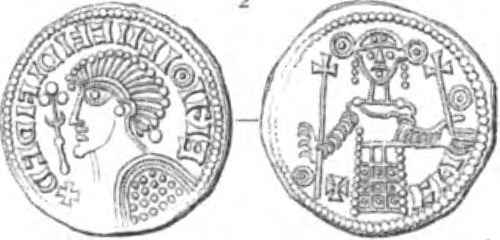
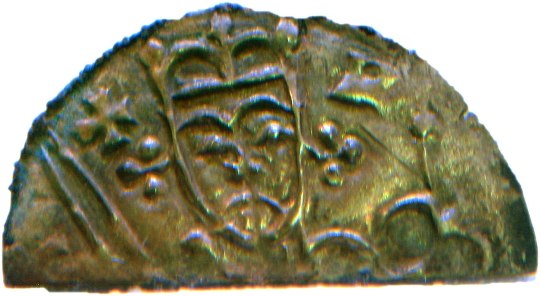
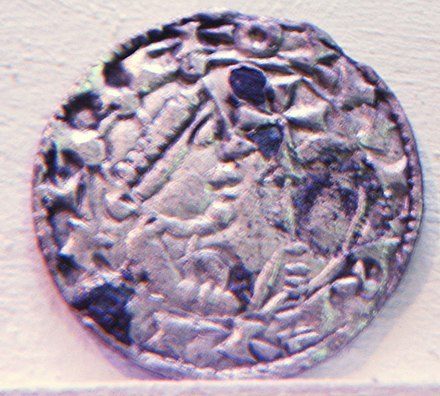

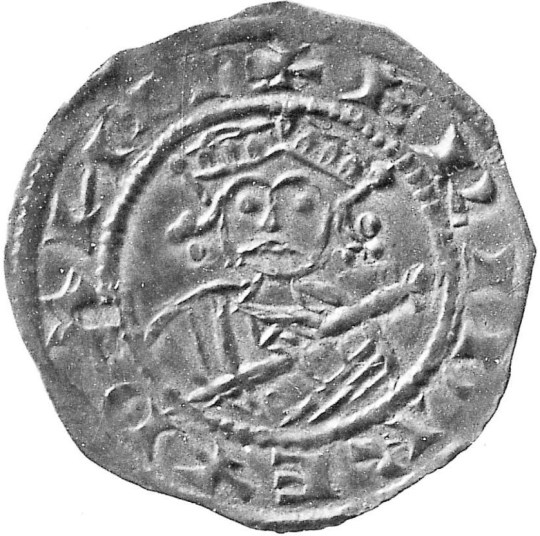

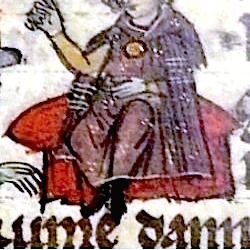
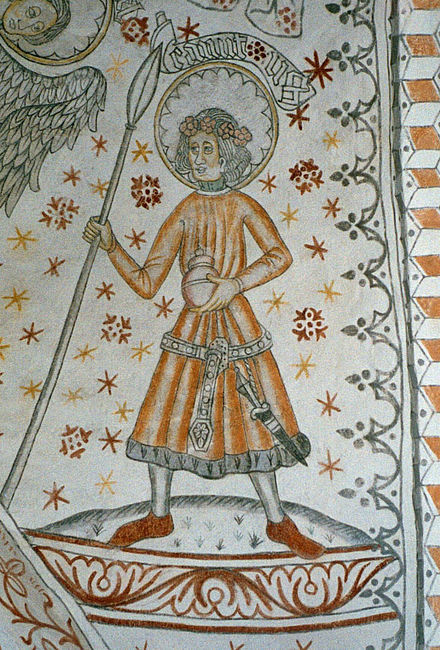
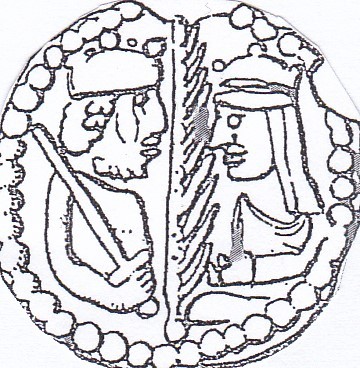
The Bastard Kings and their families
This is series of posts are complementary to this historical parallels post from the JON SNOW FORTNIGHT EVENT, and it's purpouse to discover the lives of medieval bastard kings, and the following posts are meant to collect portraits of those kings and their close relatives.
In many cases it's difficult to find contemporary art of their period, so some of the portrayals are subsequent.
1) Harald III of Denmark (c. 1040 – 1080), son of Sweyn II of Denmark and a concubine named Alvhild
2) Sweyn II of Denmark (c. 1019 –1076), son of Ulf Thorgilsson and Estrid Svendsdatter. Father of Harald III, Cnut IV, Niels I, Olaf I and Erik I
3) Niels I of Denmark (c. 1065 – 1134), son of Sweyn II of Denmark and a concubine
4) Olaf I of Denmark ( c. 1050 – 1095), son of Sweyn II of Denmark and a concubine
5) Cnut IV of Denmark (c. 1042 – 1086), son of Sweyn II of Denmark and a concubine
6) Erik I of Denmark (c. 1060 – 1103), son of Sweyn II of Denmark and a concubine
7) Erik II of Denmark ( c. 1090 – 1137), son of Erik I of Denmark and a concubine
8) Sweyn III of Denmark (c. 1125 – 23 October 1157), son of Erik II of Denmark and a concubine named Thunna
9) Cnut/Knut/Canute Lavard ( 1096 – 1131), son of Erik I of Denmark and his wife Boedil Thurgotsdatter
10) Valdemar I of Denmark (1131 –1182 ), son of Canute Lavard and his wife Ingeborg of Kiev: with his wife Sophia of Minsk (d. 1198), daughter of Volodar of Minsk and Richeza of Poland
#jonsnowfortnightevent2023#asoiaf#a song of ice and fire#echoes of the past#day 10#historical parallels#medieval bastard kings#bastard kings and their families#harald iii of denmark#harald hen#sweyn ii of denmark#niels i of denmark#olaf i of denmark#olaf hunger#cnut iv of denmark#canute the saint#erik i of denmark#erik evergood#erik ii of denmark#erik grathe#sweyn iii of denmark#canute lavard#valdemar i of denmark#canonjonsnow
8 notes
·
View notes
Text
29th July
St Olaf’s Day

Wooden Statue of St Olaf by Ferdinand Stuflesser. Source: stuflesser.com
Today is St Olaf’s Day. Olaf (995-1039) was a fervently Christian king of Norway who was not above using force and repression to convert the remaining Norse pagans to Christianity. The resentment this campaign caused enabled King Canute, the Danish conqueror of England, to stimulate a revolt against Olaf in Norway, leading to the king’s overthrow. In the civil war that followed Olaf’s attempt to regain his kingdom, he was killed. This greatly pleased Canute, who held a long standing grievance against his fellow Scandinavian monarch because Olaf had supported the Anglo-Saxon king Aethelred the Unready against Canute’s invasion. When Canute was then invited to take the vacant throne of Norway, thus creating a vast Scandinavian empire, the Danish/English king’s revenge on Olaf was complete.
Olaf’s extreme Christianity led to his canonisation and he became particularly popular in those parts of the British Isles settled by the Vikings. The saint became associated with cures and miracles, the waters of wells dedicated to his name being believed to be curative.
0 notes
Text

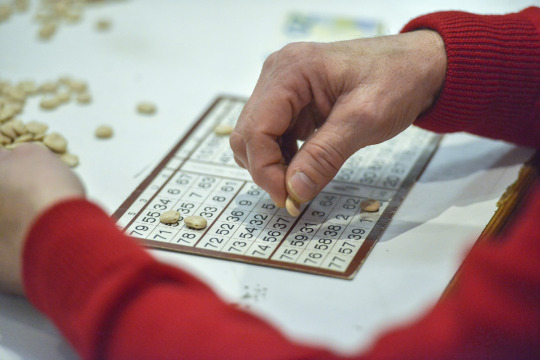
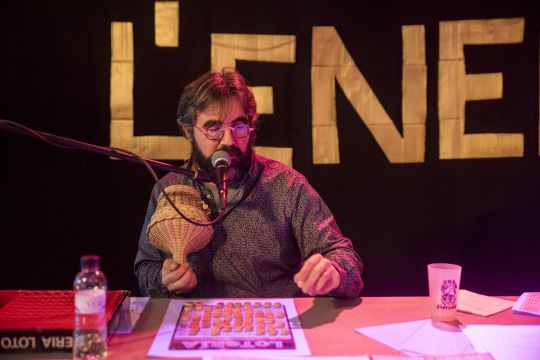

Photos: quinto being played in Sant Cugat del Vallès (Barcelona Metropolitan Area, Catalonia). Photos from Tot Sant Cugat. Close up to the numbers carton taken in Sabadell (BMA, Catalonia), by Óscar Espinosa for Diari Sabadell.
On the evening and night of Christmas (December 25th), Saint Stephen (December 26th), and sometimes more days around it, many people in the Catalan Countries will be playing a very fun game called quinto, quina, plena, rifla or loteria vella, depending on the area. To summarize it, it could be described as an unhinged traditional kind of bingo, but words can't do it justice.
Social centres (social centres are a big thing here) and other organizations set up the game, which is attended by many people of all ages. When you come in, you pick up a carton with numbers for yourself (each carton has all numbers from 1 to 90 but organized differently) and a handful of dry beans for the table. A person known as "the parrot" (el lloro) will pull out balls with numbers from a bottle basket or a hollow dry squash, but for many numbers he will not say the number, he will refer to it in a cryptic way, through a rhyme, an idiom, a pun or a joke. Each town or area has their own way of naming each number, some of which require the players to sing back or complete the sentence. Here are a few examples of how the "parrot" can say the number 1:
el més menut ("the smallest one"), to which the players shout back to the "parrot" el teu canut! ("your wallet!")
la més petita ("the smallest one"), to which the players say to the "parrot" la teva! ("yours!", you can guess what the innuendo is)
el més petit de tots ("the smallest of them all"), to which the players sing back tocava la trompeta ("played the trumpet"). This is part of a traditional Catalan song about kids who were sent to war.
Cap d'Any ("New Year's Day")
és tot sol ("he's alone")
el primer de mil ("the first of a thousand")
el primer ("the first one"), to which the players reply el Barça! (Barça is Barcelona's football club, meaning it's on top of the charts, the best club)
The rest of numbers follow the same idea. A few more examples:
2: un dos ("a two", said the same way as "one two"), to which the players say tres quatre ("three four").
6: el sis ("the six", pronounced the same as "please, stand up" in formal you), followed by the players' reply alci's vostè ("YOU stand up").
8: un que és vuit/buit ("one that is eight" which is pronounced the same as "one that is empty"), followed by the players' reply el teu cap! ("your head!) or el teu llit! ("your bed!").
2: un aneguet ("a little duck"). 22: dos aneguets ("two little ducks").
4: una cadireta ("a little chair"). 44: dues cadiretes ("two little chairs").
75: l'any que va morir el Paquito ("the year Paquito died", in reference to 1975, year when the despised dictator Francisco Franco died. Paquito is a diminutive of Francisco, here used to ridiculize him)
90: pelat l'avi (all multiples of 10 are called pelat, this one is "pelat the grandpa").
The number of the day of each festivity: 17 is Sant Antoni, 23 is Sant Jordi, 28 is els sants innocents ("holy innocent's", 28th december), etc. 25 is sang el 25 de desembre (December 25th) with the players singing fum, fum, fum (lyrics of a famous Catalan Christmas carol).
Every time a number ends in 1 (21, 31, 41, etc), the players say in a high pitched voice "uuuu uuuuu!"
The list would be never ending if we could see what is said in every town. Some "parrots" might also add some new way of saying it according to some common reference for the people of the town, or even a historical event (I've seen some refer to 23 as "todo el mundo al suelo!", Spanish sentence meaning "everyone to the ground!" which was said by Tejero in the 23rd February 1981 failed coup d'etat).
As you see, there's many things to remember, and the "parrot" sings quite quickly, so you're always busy placing the dry beans on top of the numbers that have been said, trying to get a line or a square. Whoever gets it will shout línia! ("line!") or pleno! ("full!"), and their carton will be taken to the "parrot" to check if they did it right. If it's correct, this person will win the prize (usually consisting on a basket with products donated by local shops as well as the money being played), and then the rest of players might whistle and shoot dry beans at the winner, especially if they or their surroundings have already won a previous round.
But, as if the players didn't have enough things to be busy with, at any moment they can shout more things at the "parrot":
If you have only one number left: busca-me-la! ("search it for me!").
Or you can be more specific with what you need: una de petita! ("a small one!"), una de gran! ("a large one!"), i els vuitantes? ("what about the 80s?"), petits a dormir ("the little ones, bedtime" if you don't want small numbers)...
If numbers that end with the same show up on a row: remena! (shake it!) or remena, nena! ("shake it, baby!", in reference to a famous 1930s song).
If the "parrot" is not saying any good numbers for you or has been the same person for a long time: canvi de lloro! ("change the parrot!") clapping or banging the table three times, said repeatedly. It can be a joke just to say it's not working for you, or if more people join and if the clamor is sang by many players, the person who says the numbers will change.
You can also shout things that rhyme with the number that has just been said, for example: dos! - que n'ets, de gos! ("2!" - "you're such a dog"), set! - tira't un pet! ("7!" - "fart!")
These are only a small percentage of the sentences said, and many jokes and puns can't be translated outside of the Catalan language. It's difficult to explain how fun this game is and how unhinged it can get in some occasions, but I hope you could imagine it with this explanation.
Merry Christmas! Bon Nadal!
#tradicions#nadal#quinto#quina#catalunya#catalunya nord#país valencià#christmas traditions#christmas#games#gaming#català#catalan#cultures#culture#anthropology#ethnography#the more you know#puns
62 notes
·
View notes
Text
Round 2, Match 13: Askeladd vs. Rune Saint John
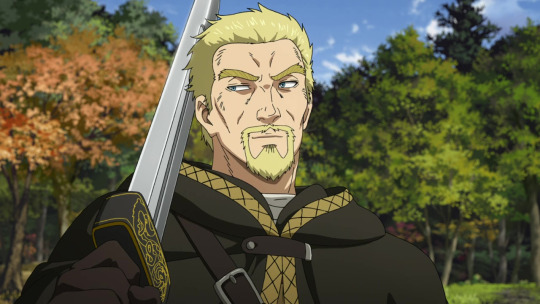

Submitted kids:
Askeladd: Thorfinn, Canute
Rune Saint John: Max Saint John, Quinn Saint Nicholas, Layne Dawncreek, Annawan Dawncreek, Corbitant Dawncreek
Propaganda under the cut!
Askeladd:
1. "The funny thing about Askeladd is he keeps killing the dad's of characters and then adopts them.
At the very start of the show he kills the main character's father. The 6 y/o main character vows revenge and follows him around trying to kill him for like ten years. Askeladd does not take this seriously at all and is basically his mentor and new dad, even though Thorfinn despises him.
Then later they meet Canute (prince of Denmark). Askeladd kills his right-hand-man/father-figure to toughen Canute up, then becomes Canute's evil advisor/father figure in his quest to overthrow his biological father (king of denmark)
Askeladd ends up killing the king of Denmark as well which makes us three for three on the father-killing.
None of this ever bites Askeladd in the ass btw he's free to kill and adopt and is having a grand old time. He's so funny about it, too"
2. "Askeladd is the leader of a band of Vikings. He was hired to kill a man named Thors. Thors' son Thorfinn witnessed the murdur of his father at the age of six and swore to avenge his death by killing Askeladd. So he joined Askeladd's band. Askeladd, who despite being the cause of Thors' death respected the man, and agreed to duel with Thorfinn if he followed his orders during fights. Thorfinn was defeated each time and Askeladd (in a twisted and mocking way) always gave him advice how to be better. In the end Thorfinn didn't kill Askeladd because - as Askeladd alluded to by his own story of killing someone out of hate - he would've killed him sometime earlier during those 11 years if he really hated him. In the end Thorfinn realized too late that from a hated person Askeladd became kind of a father figure to him during those 11 years. (The mangaka called Askeladd 'an amazing tsundere dad')
Canute is the youngest son of the Danish king. When the Danes were fighting in England the king sent Canute to lead the siege of London so Canute could die there and there wouldn't be any fights for the throne in the future. Askeladd, being a sly mastermind who plays 5D chess at all times, decided to save Canute from the enemy forces so when he'd return him safely to the king he could get into a position so he could influence Canute to protect Wales. But before that he had to get rid of Canute's previous adoptive father, Ragnar. (Yes, it's a pattern.) So when Ragnar was dying, he told Askeladd that ""Btw, the king hates his son and wants him dead"", so Askeladd had to recalculate a lot of things, and in the end he and Canute worked together to kill the king and create a situation where Canute could come out as a strong heir.
In his last minutes, Askeladd decided to not chose between Wales and Canute, and saved both instead, and used his last breath to convince Thorfinn to let go of his anger.
Sometimes a family is a half-Danish mercenary who kills father figures, an gremlin child from Iceland with anger issues, and a timid Danish prince who goes through a strong character developmen by becoming rejecting his religion."
Rune Saint John:
“Oh my god, oh lord where do I start. Within the FIRST CHAPTER of the FIRST BOOK he accidentally adopts a teenager in exchange for a magical artifact during a deal with a fae- this teen is Max! He then later adopts Quinn, whos older brother he is dating. Then he adopts the three Dawncreek children after a series of events in the second book that i wont get into due to plot spoilers, but it was ✨traumatic✨ AND the author had confirmed that there will be ANOTHER kid joining his found family in the upcoming 4th book. Rune is the chosen one, there are MANY prophecies about him, to the point that Quinn; who has the ability to see future probabilities, finds it difficult to look at him. He experienced horrific sexual assault, and he just wants to be a decent person and look after these traumatized magic children. Every member of his found family is a chaos gremlin- including Rune. Honestly this book series is so so very near and dear to my heart, and it handles topics like grooming and assault with incredible tact and care and more people should read about Rune and his queer disaster found family.”
#vinland saga#askeladd#vinland anime#vinland manga#rune saint john#the tarot sequence#tarot sequence#serial adopters bracket#round 2#tumblr tournament#tumblr polls
12 notes
·
View notes
Text
Heresies & Ecumenism
“Let all men know how empty and worthless is the power of kings. For there is none worthy of the name but God, whom heaven, earth and sea obey” — King Canute, Ruler of Denmark, Norway, and England (attributed)
The older I get, the more I dismiss the fervent fanaticism I see in those around me. And while I used to think about religious zeal as the sole purview of Christian sectarianism, I've begun to see it more and more in almost every ideological circle I encounter. One person may be a RINO (Republican In Name Only). Another may pay lip service to some transgender cause, reject another point, and be labeled a traitor to the struggle. There are environmental heresies, and there are Russian Ex-Pats who support Ukraine in their current conflict, but who are deemed to be subversive because of the country they were born in.
And the truth of the matter is... It's all nonsense.
The World will do what it does. There is a reality that exists beyond the models we create in our heads. There's landscape that will not change, no matter the stories we tell ourselves.
Heresies are nothing more than you and I arguing over which of the stories we're telling ourselves most closely matches our lived experiences, or the reality we assume undergirds it.
I mentioned in a prior post that I try to be accommodating with whatever group I am with.
In that post I gave a quote from St. Ambrose. Here are some from St. Paul.
Give no offense to Jews or to Greeks or to the church of God… —1 Corinthians 10:32
To those outside the law I became as one outside the law (not being outside the law of God but under the law of Christ) that I might win those outside the law. To the weak I became weak, that I might win the weak. I have become all things to all people, that by all means I might save some. I do it all for the sake of the gospel, that I may share with them in its blessings. — 1 Corinthians 9:21-23
Ecumenism has become the "Antichrist" among a large portion of the Christian community. Adventists fear it because they feel that to embrace it will result in apostasy infiltrating their Church, the very same could be said about the Eastern Orthodox Christian Community.
But the truth of the matter is that we are arguing over models, arguing over the way we think the world works, and none of us have the humility to stop and say…
"I don't know what's real. But I will do my best to live out the life I've been given in the way I think God intended me to live".
"We have spoken freely to you, Corinthians; our heart is wide open. You are not restricted by us, but you are restricted in your own affections. In return (I speak as to children) widen your hearts also. — 2 Corinthians 6:11-13
I loved Eastern Orthodox Christianity once, and the people of the Antiochian community I associated with. I also love the People in my Seventh-Day Adventist community too, the ones I continue to daily struggle with. And for all my criticism of other protestant groups, they're all trying to discern the mind of God in their own way. I honestly feel for their struggles, since I don't think they have really looked at nature - they look at God as a very human Judge - and not as the creator of Heaven and Earth.
They don't see him in every single blade of grass, and that must be difficult for them.
I've often wished I could have a spiritual mentor, a father, in the form of an Antiochian Orthodox Priest. I also understand that pillars of Christianity such as St. Mary of Egypt, or St. Simeon the Stylite didn't have anything like that - formal mentors. So I look to more mundane instruction, as both those Saints, and many unnamed others must have had to do, and I struggle forward.
I watched the recent Heliocentric video, and see in his assessment the same thing I experienced myself. Namely, Worship isn't about forming the perfect model of reality, your Orthodoxy or your Heterodoxy, or giving TED talks on your newfound wisdom. It's about priorities, and recognizing the reality that God comes first.
It's about knowing your place, and finding peace there.
Lord Jesus Christ, Son of God, Have Mercy upon me, A Sinner.
3 notes
·
View notes
Text
Sts Marius & Companions, St Canute (1040-1086) Martyr, King of Denmark and all the Saints for this day in history - 19 January
Sts Marius and Family of Perisa – Martha, Audifax, Abacjum (Died c270 – Martyrs, Husband, Wife and 2 Sons – in the time of Emperor Claudius.The Roman Martyrology today states: “At Rome, on the Cornelian road, the holy Martyrs, Marius and his wife Martha, with their sons, Audifax and Abachum, noble Persians, who came to Rome, through devotion, in the time of the Emperor Claudius. After they had…

View On WordPress
9 notes
·
View notes
Text
Holidays 7.10
Holidays
Armed Forces Day (Mauritania)
Army Day (Albania)
Battle of Britain Anniversary Day
Battle of Poltava Day (Russia)
Beatles Day (Liverpool, Hamburg)
Capybara Appreciation Day
Chronic Disease Awareness Day
Clerihew Day
Cumin Day (French Republic)
Don't Step On A Bee Day (UK)
Flag Day (Mongolia)
Global Energy Independence Day
Gospel Day (Kiribati)
His Masters Voice Day
International Glut1 Awareness Day
International Safewords Day
Lá Cuimhneacháin Náisiúnta (National Day of Commemoration; Ireland)
Lady Godiva Day
London Bridge Falling Down Day
Merchant’s Festival (Elder Scrolls)
Minion Day
Naadam Day (Mongolia)
National All American Pet Photo Day
National Caleb Day
National Contour Day
National Fish Farmers Day (India)
National Kitten Day
National Lineworker Appreciation Day (Canada)
National Stella Day
National Transplant Financial Coordinator Day
Natto Day (Japan)
Nikola Tesla Day
Oils and Concentrates Day
Police Radio Day
Protogeneia Asteroid Day
Rhodes Day (Rhodesia)
710 Day
Silence Day (Meher Baba)
Srebrenica Memorial Day
Stay Away From Bees Day
Teddy Bear's Picnic Day
Telstar Day
Uniwaine (Senior Citizens’ Day; Kiribati)
U.S. Energy Independence Day
World Airway Disorders Day
World Miniature Golf Day
World Shuvit Cancer Day
Food & Drink Celebrations
Beer Distributors Day
National Piña Colada Day
National Pizza Day (Brazil)
Pick Blueberries Day
Independence & Related Days
Bahamas (from UK, 1973)
Federal Republic of New Potato Land (Declared; 2017) [unrecognized]
Wyoming Statehood Day (#44; 1890)
2nd Wednesday in July
National Day of Prayer and Thanksgiving (Montserrat) [2nd Wednesday]
Weekly Holidays beginning July 10 (2nd Week of July)
Sweetheart Days Festival (Minnesota) [2nd Wednesday; thru Friday]
Festivals Beginning July 10, 2024
American Cheese Society Annual Conference (Buffalo, New York) [thru 7.13]
European Balloon Festival (Igualada, Spain) [thru 7.14]
EXIT (Novi Sad, Serbia) [thru 7.14]
Love International Festival (Tins, Croatia) [thru 7.16]
Mad Cool Festival (Madrid, Spain) [thru 7.13]
Ossipee Valley Fair (South Hiram, Maine) [thru 7.14]
Riddu Riđđu (Manndalen, Norway) [thru 7.13]
Sandcastle Contest (Belmar, New Jersey)
Tangomarkkinat (Seinäjoki, Finland) [thru 7.14]
Vegan Summerfest (Johnstown, Pennsylvania) [thru 7.14]
Winona County Fair (St. Charles, Minnesota) [thru 7.14]
Woody Guthrie Folk Festival (Okemah, Oklahoma) [thru 7.14]
Feast Days
Alice Munro (Writerism)
Amalberga of Maubeuge (Christian; Saint & Widow)
Amalburga (Christian; Saint & Virgin)
Antony and Theodosius Pechersky (Christian; Saints)
St. Bathilda (Positivist; Saint)
Camille Pissarro (Artology)
Canute IV of Denmark (Christian; Saint)
David Teniers III (Artology)
Day of Holda (Goddess of the Underworld; Anglo-Saxon, Norse)
Feast Day of Knut the Reaper, Hela, Holda and Skadi (Norse)
Feast of Translation of Saint Maclovius, Bishop of Saint-Malo (Christian; Confessor)
Feast of The Seven Brothers (Januarius, Felix, Philip, Silvanus, Alexander, Vitalis, and Martialis; Christian; Martyrs)
Felicitas of Rome (Christian; Martyr)
The First Sermon of Lord Buddha (Buddhism; Bhutan)
Giorgio de Chirico (Artology)
Hela’s Day (Pagan)
Joe Shuster (Artology)
Kanute IV, King of Denmark (Christian; Martyr)
Knut the Reaper's Day (Norse; Scotland)
Marcel Proust (Writerism)
Mel Blanc Day (Church of the SubGenius; Saint)
Millennial Fairy Olympics, Day 5 (Shamanism)
New Robe for Athena Day (Ancient Greece)
Otto Freundlich (Artology)
Pina Colada Day (Pastafarian)
Reach Out and Touch a Green Leaf Day (Starza Pagan Book of Days)
Reg Smythe (Artology)
Ronnie Cutrone (Artology)
Rufina and Secunda (Christian; Martyrs & Virgins)
Rusty (Muppetism)
Septic Bralu Diena (Ancient Latvia)
Seth Godin (Writerism)
Seven Brothers (Christian; Martyrs)
Sixto Rodriguez (Humanism,)
Tita or Tatata Ita (Muppetism)
U Festinu (a.k.a. Feast of St. Rosalia; Palermo, Italy) [thru 7.15]
Viaticum of Llefoed Wynebglawr (Celtic Book of Days)
Victoria, Anatolia, and Audax (Christian; Saints)
Wickerwork Giants Parade & Festival (Douai, France)
Lucky & Unlucky Days
Butsumetsu (仏滅 Japan) [Unlucky all day.]
Fatal Day (Pagan) [13 of 24]
Prime Number Day: 191 [43 of 72]
Unfortunate Day (Pagan) [39 of 57]
Premieres
Ball Four, by Jim Bouton (Sports Memoir; 1970)
The Brave Little Toaster (Animated Film; 1987)
Cocky Cock Roach (Terrytoons Cartoon; 1932)
Cool World (Animated Film; 1992)
The Day of the Triffids, by John Wyndham (Novel; 1951)
Do Way Diddy Diddy, by Manfred Mann (Song; 1964)
Escape from New York (Film; 1981)
The Fox and the Hound (Animated Disney Film; 1981)
Greyhound (Film; 2020)
A Hard Day’s Night, by The Beatles (Album; 1964)
Heat Wave, by Martha and the Vandellas (Song; 1963)
Homesteader Droopy (Tex Avery MGM Cartoon; 1954)
The Hot Spell, featuring Farmer Al Falfa (Terrytoons Cartoon; 1936)
Lethal Weapon 4 (Film; 1998)
I Got You Babe, by Sonny and Cher (Song; 1965)
I Love You Beth Cooper (Film; 2009)
In Search of Lost Time, by Marcel Proust (Novel; 1927)
In the Midnight Hour, by Wilson Pickett (Song; 1965)
Mad Max Beyond Thunderdome (Film; 1985)
Minions (Animated Film; 2015)
Moon (Film; 2009)
Mother Necessity (America Rock Cartoon; Schoolhouse Rock; 1976)
New Maps of Hell, by Bad Religion (Album; 2007)
Ode to Billie Joe, by Bobbie Gentry (Song; 1967)
The Oily American (WB MM Cartoon; 1954)
The Old Guard (Film; 2020)
Once Upon a Mouse (Disney Cartoon Documentary; 1981)
The Outpost (Terrytoons Cartoon; 1942)
Palm Springs (Film; 2020)
Parachutes, by Coldplay (Album; 2000)
Pi (Film; 1998)
Pink Valiant (Pink Panther Cartoon; 1968)
She Wolf, by Shakira (Album; 2009)
Small Soldiers (Animated Film; 1998)
Smoke Signal (Animated Film; 2018)
Son of Schmilsson, by Harry Nilsson (Album; 1972)
Summertime, recorded by Ella Fitzgerald (Song; 1936)
Tempted, by Squeeze (Song; 1981)
Trouble with Lichen, by John Wyndham (Novel; 1960)
Unnatural Death, by Dorothy L. Sayers (Novel; 1927) [Peter Wimsey #3]
Up N’ Atom (Color Rhapsody Cartoon; 1947)
The Wayward Pups (Happy Harmonies Cartoon; 1937)
We Are the Champions/We Will Rock You, by Queen (UK Song; 1977)
Your Hit Parade (TV Series; 1950)
Today’s Name Days
Engelbert, Knud, Raphael (Austria)
Feliks, Srećko, Viktorija (Croatia)
Amálie, Libuše (Czech Republic)
Knud (Denmark)
Saima, Saime, Saimi (Estonia)
Saima, Saimi (Finland)
Ulrich (France)
Knud, Engelbert, Raphael, Sascha (Germany)
Amália (Greece)
Amália (Hungary)
Armando, Marziale, Pietro, Rufina (Italy)
Lielvardis, Lija, Ol��vija, Uve (Latvia)
Amalija, Eirimė, Gilvainas (Lithuania)
Anita, Anja (Norway)
Aleksander, Amelia, Aniela, Filip, January, Radziwoj, Rufina, Samson, Sylwan, Sylwana, Witalis (Poland)
Amália (Slovakia)
Cristóbal (Spain)
André, Andrea, Anund (Sweden)
Anthony (Ukraine)
Emanuel, Emmanuel, Gage, Immanuel, Manuel, Manuela (USA)
Emanuel, Immanuel, Maos, Manuela, Ulla, Ulrich, Ulrika, Ulrike (Universal)
Today is Also…
Day of Year: Day 192 of 2024; 174 days remaining in the year
ISO: Day 3 of week 28 of 2024
Celtic Tree Calendar: Tinne (Holly) [Day 4 of 28]
Chinese: Month 6 (Xin-Wei), Day 5 (Yi-Hai)
Chinese Year of the: Dragon 4722 (until January 29, 2025) [Wu-Chen]
Hebrew: 4 Tammuz 5784
Islamic: 3 Muharram 1446
J Cal: 12 Red; Foursday [12 of 30]
Julian: 27 June 2024
Moon: 21%: Waxing Crescent
Positivist: 23 Charlemagne (7th Month) [St. Bathilda]
Runic Half Month: Ur (Primal Strength) [Day 2 of 15]
Season: Summer (Day 21 of 94)
Week: 2nd Week of July
Zodiac: Cancer (Day 20 of 31)
2 notes
·
View notes
Text
Still making my way trudgily thru Vinland saga and thinking a bit about what makes it feel so much more authentic and admirable than a huge amount of similarly themed preachy pop media (artistic sermons about how violence is not the answer). The example in the forefront of my mind is the civil rights arc from the umbrella academy s02, which I was watching pre-breakup with my ex. The good place can fit this mould at times too
I think the fundamental answer is that a lot of competing preachy pacifist propaganda is really selling a sort of complacency and self-congratulation. The height of morality is a moderately intensified version of well-adjusted suburban existence—maybe one that’s more politically involved, maybe one where you don’t call the cops much/ever, maybe one where you’re a bit ahead of the curve on social inclusion and conscientious consumption. But, once you’ve purged it of some unfortunate socially backward residue, a saint looks basically smth like you, the dignified and well-reared middle class liberal
VS refuses to let you indulge this fantasy, vigorously. It repudiates the idea at every step. Some examples [spoilers]:
The heroes are men who have committed or negligently failed to resist inexcusable acts, repeatedly and at mass scale. Thus they cannot present pacifism as a promised means of resting assured of their moral superiority; indeed, especially the protagonist makes it clear that he cannot preside over violent judgment precisely bc he is conscious of his guilt
In one of the most beautiful animanga scenes I’ve ever read/watched, the work viciously attacks the values of family and personal loyalty. Particular “loves” like those between parent/child or husband/wife are not even love at all, they are mere prejudice and favouritism, no different from servile courtiers debasing themselves before a king while exploiting their social inferiors. This is, obviously, a bad fit for middle class morality
It refuses to condemn revolutionary violence in absolute terms. King Canute, reimagined as a femboy 11th cent Lenin of the north sea, is one of the vaunted few who can see beyond to a truly better world. The manga makes clear which route it prefers between egalitarian radical pacifism and ruthless strongman militarism, but it doesn’t let the better man (that is, vicariously, the audience) gloat about it and also makes clear that the latter is at least asking the right questions (a rare and laudable achievement)
The hero’s personal self-transformation is centrally, flauntingly undignified. His pride and dignity are the first things he is willing to toss aside for the sake of his dream of a better world. His pacifism doesn’t allow him to preserve his dignity and honour at all: it treats it instead as one of his first hindrances
It also manages to be so earnest and unsubtle to circle around from cringe to endearing. You can tell she’s really putting her whole heart into it, she really believes she needs to say what shes saying with it and won’t let artistic sophistication and discretion stand in the way of it
In conclusion pls read the manga it is very good :3
#this is a very tumblrina post oh well#was thinking about the Franciscan spirituals recently#much more tolerable to me than miyazakis pacifism tbh
49 notes
·
View notes
Text
SAINT OF THE DAY (October 13)

St. Edward was born in 1003 as the son of the Duke of Normandy and nephew of King Edmund Ironside of England.
He grew up in exile in Normandy from the age of 10 when the Danes gained control of England.
The early experience of loss, coupled with his earnest religious piety, caused him to renounce worldly ambition and devote himself to the love of God.
In 1042, on the death of the Danish king, Canute, he was called to the throne of England, which he accepted dutifully and held until 1066.
His saintly bearing made him a popular sovereign, and his actions even more so. He abolished an unjust tax and was known to cure people with his touch.
Having made a vow of chastity, he accepted marriage for the sake of his kingdom but lived with his queen in celibacy, as brother and sister.
Unable to fulfill a vow to embark on a pilgrimage to Saint Peter’s tomb without leaving his subjects vulnerable to attack, his vow was commuted by the pope to the rebuilding of Saint Peter’s Abbey in Westminister, where he was buried upon his death a week after it’s dedication.
Edward died on 5 January 1066. Usually considered the last king of the House of Wessex, he ruled from 1042 until his death.
He was canonized by Pope Alexander III on 7 February 1161.
4 notes
·
View notes
Text
The sea fig, ch. I, Emma.
(First chapter of this series, posting just because I'm proud of this prologue)
It was an early morning when London was awakened by horns bellowing, accompanying ships that were approaching the city. The sky was of an ashy colour, darkening as the clouds filled with rain, and the Londinium’s sentinels struggled to identify the ships’ banner as water, sky and air blended and created an untouchable barrier. When the boat was finally visible, though, seeing the Norman banners filled them with release, and soon the visitor was let in.
When Queen Emma was alerted of a visit from Normandy, she was surprised. She hadn’t received a previous notice, and her brothers’ last letter had come just after Canute’s departure, congratulating for her new marriage. She sat on her throne, her niece in law Gytha by her right and her lady in wait Aelfwynn by her left, waiting for the visitor to come.
They didn’t have to wait long, for soon the blue doors opened and let in her guards, Lord Godwin and a mass of Norman soldiers. In the midst of them a young woman came forth. She was tall with dark brown hair braided in a simple updo, clad with a brown furred coat that was fastened with a sun shaped golden broach. Emma instantly recognized the symbol; it was inspired by the oriflamme of Saint-Denis, once raised by her grandfather’s parents.
She bowed after her, and Emma got up from her sit to walk to the girl. One of the Norman soldiers approached her, greeted as due and spoke.
“My Queen, it is an honour to be before you. We are men of your brother, Duke Richard the Good, and we are accompanying your niece, Lady Adelaide. The duke wishes for her to stay with you and sends his best regards”.
Emma listened closely. She knew her niece, though last time she had met her was a long time ago. Now she was before her, bowing not anymore as a wild child but as a young woman with the usual Norman countenance. And she was surprised. Her brother loved his daughters, they were the jewels he prided around anytime he could, and her sister-in-law was a devoted mother. What could have prompted them from wishing to part from her?
Her curiosity needed to wait, and she got down to gently hold her niece and help her into a standing position. She could feel Godwin’s eyes on her, surprised of her sudden display of affection to the girl, but she ignored it and smiled softly at the young girl whose face was so familiar.
“Niece, welcome to London. Why would my brother part Normandy from one of their gems?”
“My Queen, my father wishes me to marry the Lord of Lyonnais. I refused.”
Queen Emma turned to see Godwin’s face drop, his expression showing how impressed he was with her niece. “As you can see, Lord Godwin, Norman Ladies have a tendency for impertinence”.
She saw the Lord regain his composure and come forth to curtsy, almost embarrassed to have lost his poise. “Adela, this is Lord Godwin, Jarl of Wessex. He is the right hand of King Canute”. Adelaide greeted him properly, and Emma couldn’t help but beam with pride, grateful that her brother had educated her niece in the same fashion as their father had.
“Adela, now tell me, do you have any good news from Normandy?” asked Emma as she sat down the throne.
“The good news is that my father’s work to legitimize our claim to the motherland is bearing its fruits. My sister is growing steadily, and my younger brothers have already started their training”.
“That’s very good. And my children?”
“They are well and are being trained by our Uncle Geoffrey. Before coming here I visited them, and I am happy to report that Edward is advancing in his studies and Alfred is following suit”.
Emma couldn’t have been happier to hear news of her children, and to know that they had a cousin such as Adela brought her much relief. Despite this she wasn’t blind to Adela’s shifting and rigid posture, showing some signs of the fatigue she tried to hide.
“Well Adela, we have much to share still, and I am delighted to have you here. I think you’ve earned your rest! Gytha, Aelfwynn, please show my niece to her rooms! Lord Godwin, please show the Norman soldiers for their quarters”.
Lord Godwin nodded and promptly left the room followed by the soldiers, as Adela was welcomed by her ladies in wait and swiftly taken to her quarters. She was pleased to see her niece become acquainted to Gytha, they were close in age and would have benefited greatly of each other’s company.
Left alone in the throne halls, Emma saw the potential of having under her wing her brother’s daughter to further Norman roots in London. Richard and Judith were busy with their younger children, but she could give Adela what they couldn’t. And if her brother didn’t have a change of heart she would provide for the girl.
Satisfied she got up and retired to her chambers. The corridor was dimly lit by the windows on the left walls, her steps loudly echoing on the stone floor. London wasn’t Normandy. When she married AEthelred the narrow corridors and deafening silence almost drove her mad. Normandy was colourful, and she and her siblings had filled its halls with laughter and mischief, but she had learnt quickly that London was the exact opposite. Where Normandy shined, London darkened. With time she adapted, and became a perfect English Lady, but she was still a Norman. And now that Viking rule was softening the English manners, she knew her niece would help dissolve that grip completely.
When she arrived at her rooms she sat on her desk, where parchment and ink awaited her. She took her pen, dipped it in the ink and started her letter to her husband. Little pleased her more than acquainting him of their new guest. And if the weather allowed, she’d also write to her brother and sister.
#godwin x oc#emma of normandy#godwin#canute#gytha thorkelsdottir#vikings valhalla#vk fanfiction#writing#vikings fanfiction#The Sea Fig#starting with Emma's pov bc why not#godwin of wessex
8 notes
·
View notes
Text
Fine we can talk about the English
So. King Knut (Canute) was ruling in England, at least the York area. He conquered him some Denmark. He conquered him some Norway too, and drove Olaf and son Magnus to outlawry. Olaf made a bid to reclaim his kingdom, failed. Knut installed his sons as kings in England, Denmark, and Norway, and, being an old man, promptly died. (Charles take note.)
So in England, Knut's son Harald takes over, but then he dies and Knut's next son Hortha-Knut comes back from Scandinavia to rule, and he sticks around for a few years. Long enough for Magnus Olafsson to come back from Kiev and retake his country, and make a deal with Hortha-Knut that they are such good buddies that if one of them dies without a male heir, the other will inherit.
Ynglings are. Very accustomed to sharing crowns, I have discovered.
So Hortha-Knut dies. Magnus is a bit busy with this dude Svein who keeps trying to conquer Denmark on the grounds that Magnus gave it to him as jarl and who cares if Svein declares himself king and independent, it's his now, don't you know who his father is?? Anyway Edward (Eadward) takes over in England.
Magnus gets shut of Svein, finally, largely by inspiring his army with stories of how Svein's daddy might be a king but Magnus's daddy is a saint, and God is on their side, the daddy of all daddies. So once he's feeling confident in his hold over Norway and Denmark, he sends a message back to England all, "Hey, remember this deal I had with Hortha-Knut?"
And Eadward, that badass pushover, sends a message back, saying, "Look. My dad was king of England, and I was well. When he died my eldest brother Eadmund was king, and I was well. After him my stepfather Knut ruled England, and I was well. And when he died my brother Harald ruled, and I was well. And when he died my brother Hortha-Knut ruled, and I stood by, and all was well, but let me remind you that I yet of the brothers had no kingdom to govern.
"So now you want to come over here and declare yourself king? Let me just say, over my dead body.
"And I will make it easy for you. If you come, I will not raise an army, you can march right in. But you will very much have to kill me with your own hands."
Which Magnus abstains to do.
#it's a very Much Adooooo sort of a message#one woman is fair yet I am well#that she raised me I likewise give her most humble praise#but that I WILL RAISE MY BUGLE ---#Norsebinge#icy sagas#while I'm at it: my word choice in that last line is a deliberate reference to Donne's “Woman's Constancy”
2 notes
·
View notes
Text

Malcolm greeting Margaret at her arrival in Scotland.
Detail of a mural by Victorian artist William Hole.
I’m aiming to grow my plaits that long - I’m getting there!
The following info has been lifted from Wikipedia:
Margaret was an English princess who became a Scottish queen when she married Malcolm III of Scotland in 1070. She was also known as ‘The Pearl of Scotland’. Her birthplace was actually the Kingdom of Hungary; her father was the English prince, Edward the Exile, whose expatriation came about following the Danish conquest of England in 1016, led by Canute (aka Cnut the Great). As well as being mother to at least two other kings of Scotland, Margaret was also the mother of Matilda, who became Queen of England upon her marriage to Henry I, and grandmother of Empress Matilda (aka Empress Maude - you have to know a bit about early medieval history to keep up with all this, it’s quite complicated!).
She was canonised in 1250 by Pope Innocent IV and is now referred to as Saint Margaret of Scotland (she is mentioned in the post about Durham Cathedral). She was a very pious Christian and among her many charitable works she established a ferry across the Firth of Forth for pilgrims travelling to St Andrews in Fife, which gave the towns of South Queensferry and North Queensferry their names.
3 notes
·
View notes
Text
Holidays 1.19
Holidays
Archery Day
Artist As Outlaw Day
Bondadagur (Husband’s Day; Iceland)
Confederate Heroes Day (f.k.a. Lee Day; Texas)
Educational Assistant & Child & Youth Worker Appreciation Day (Canada)
A Friend Raises Your Spirits Day
Gaza Day (Iran)
Good Memory Day
Gun Appreciation Day
The Holocaust Day (India)
Horror Novels Are Horrendous Day
Husband’s Day (Iceland)
International Sing-Out Day
Kasmir Pandit Holocaust Remembrance Day (India)
Kokborok Day (Tripura, India)
La Tamborrada (24-Hour Drum Jam; Spain)
Laura Ingall’s Wilder Day (Wisconsin)
Little Ricky Day
Lysander Spooner Day
National Annie Day
National Gun Appreciation Day
National Imagination Day
National Investment Risk Management Day
National Lucy Day
Neon Sign Day
New Friends Day [also 7.19; 10.19]
Poe Toaster (Baltimore, Maryland)
Puzzle Day
Rescuer’s Day (Belarus)
Robert E. Lee Day (AL, AR, FL, GA, MS, TN)
Sieve Day (French Republic)
Tenderness Toward Existence Day
Timket (Coptic Epiphany; Eritrea, Ethiopia) [1.19 or 20]
Tin Can Day
Whisper 'I Love You' Day
World Day of Migrants and Refugees
World Quark Day
Food & Drink Celebrations
Brew a Potion Day
International Chouriço Day
National Popcorn Day
Zay Day (Union Craft Brewing)
Nature Celebrations
International Flower Day
National Conservation Dog Day
National Penguin Awareness Day
Pine Day (Longevity; Korean Flower Days)
White Dead Nettle Day (Camium alblum)
Independence, Flag & Related Days
Georgia (Seceded from the U.S.; 1861)
3rd Sunday in January
Healthy Weight Week begins [3rd Sunday]
Homelessness Sunday [3rd Sunday]
Hunt for Happiness Week begins [3rd Sunday]
National Life Saving Day (Singapore) [3rd Sunday]
National Sanctity of Human Life Sunday [3rd Sunday]
Serene Sunday [3rd Sunday of Each Month]
Seven For Sunday [Every Sunday]
Sinulog (Philippines) [3rd Sunday]
Smörgåsbord Sunday [3rd Sunday of Each Month]
Story Sunday [3rd Sunday of Each Month]
Sundae Sunday [Every Sunday]
Sunday Funday [Every Sunday]
World Luge Day [3rd Sunday]
World Religion Day (Baha’i) [3rd Sunday]
World Snow Day [3rd Sunday]
Weekly Holidays beginning January 19 (3rd Full Week of January)
Ann Arbor Restaurant Week (Ann Arbor, Michigan) [thru 1.24]
Clean Out Your Inbox Week (thru 1.25) [Last Business Week]
Healthy Weight Week (thru 1.25) [3rd Week]
Hunt for Happiness Week (thru 1.25) [3rd Full Week]
National Certified Registered Nurse Anesthetists Week (thru 1.25) [3rd Full Week]
National Fresh Squeezed Juice Week (thru 1.25) [3rd Full Week]
National Handwriting Analysis (thru 1.25) [3rd Full Week]
National Irish Coffee Week [4th Full Week]
National Passenger Safety Week (thru 1.25)
National School Choice Week (thru 1.25) [Last Full Week]
Taste of Vacaville Week (Vacaville, California) [thru 1.26]
World Kiwanis Week (thru 1.25)
Festivals Beginning January 19, 2025
Chevron Houston Marathon (Houston, Texas)
School Nutrition Industry Conference (Phoenix, Arizona) [thru 1.21]
United States Sweetpotato Convention (Savannah, Georgia) [thru 1.21]
Winter Fancy Food Show (Las Vegas, Nevada) [thru 1.21]
Feast Days
Abachum and Audifax (Christian; Saints)
Albert of Cashel (Christian; Saint)
Bassianus of Lodi (Christian; Saint)
Blaithmaic (Christian; Saint)
Canute (a.k.a. Knud; Christian; Saint)
Charles of Sezze (Christian; Saint)
Epiphany (Eastern Orthodox)
Feast of Sultán (Baha’i)
Festival of Neith (Ancient Egypt; Goddess of the Hunt and Warfare; Starza Pagan Book of Days)
Fillan (a.k.a. Foelan; Christian; Saint)
Founders Day (Kappa Alpa Order Convivium)
Germanicus (Christian; Saint)
Harlan Ellison Day (Church of the SubGenius; Saint)
Henry of Uppsala (Christian; Saint)
Lomer (Christian; Saint)
Marius, Martha, Audifax, and Abachum (Christian; Martyrs)
Mark of Ephesus (Eastern Orthodox Church)
Messalina (Christian; Saint)
Nathalan (Christian; Saint)
Natlisgeba (Orthodox Epiphany; Georgia)
Pontianus of Spoleto (Christian; Saint)
Procrastination Day Tomorrow (Pastafarian)
Skip Squawk (Muppetism)
The Tarbh-Feis (Bull Prophecy; Celtic Book of Days)
Theocrats of Japan (Positivist; Saint)
Thorrablottar (Husband’s Day; Iceland; Everyday Wicca)
Thor’s Blot (Pagan)
Vodici (Baptism of Jesus; North Macedonia)
Water Blessing Festival (Bulgaria)
Wulfstan, Bishop of Worcester (Christian; Saint)
Lunar Calendar Holidays
Chinese: Month 12 (Ding-Chou), Day 20 (Wu-Zi)
Day Pillar: Earth Rat
12-Day Officers/12 Gods: Close Day (閉 Bi) [Inauspicious]
Holidays:
None Today
Orthodox Christian Liturgical Calendar Holidays
Theophany (a.k.a. ...
Denho (Syriac Christian; Saint)
Epiphany (Eastern and Oriental Orthodox)
Great Blessing of the Waters (Eastern Orthodox)
Natlisgeba (Georgia)
Sure Tsnund (Armenian Apostolic Church)
Timket (a.k.a. Timkat, Coptic Epiphany; Eritrea, Ethiopia)
Secular Saints Days
Ursula Andress (Entertainment)
Julian Barnes (Literature)
Paul Cézanne (Art)
Phil Everly (Music)
Lester Flatt (Music)
Patricia Highsmith (Literature)
Janis Joplin (Music)
Dolly Parton (Music)
Edgar Allan Poe (Literature)
Jean Stapleton (Entertainment)
Sophie Taeuber-Arp (Art)
James Watt (Science)
Tom Yeates (Art)
Lucky & Unlucky Days
Prime Number Day: 19 [8 of 72]
Sensho (先勝 Japan) [Good luck in the morning, bad luck in the afternoon.]
Umu Limnu (Evil Day; Babylonian Calendar; 3 of 60)
Premieres
Avenue 5 (TV Series; 2020)
Bright Eyes, by Art Garfunkel (Song; 1979)
Caldonia, recorded by Louie Jordan (Song; 1945)
Cello Concerto No. 1 in A Minor, by Camille Saint-Saëns (Cello Concerto; 1873)
Chicken in the Rough (Disney Cartoon; 1951)
Donnie Darko (Film; 2001)
48 Hours (TV News Show; 1988)
Fowl Brawl (Phantasies Cartoon; 1947)
From Dusk Till Dawn (Film; 1996)
Homeward Bound, by Simon & Garfunkel (Song; 1966)
How Could Hell Be Any Worse?, by Bad Religion (Album; 1982)
Il Trovatore ('The Troubadour'), by Giuseppe Verdi (Opera; 1853)
I Was a Teenage Thumb (WB MM Cartoon; 1963)
The Juliet Letters, by Elvis Costello (Album; 1993)
Mickey’s Man Friday (Mickey Mouse Disney Cartoon; 1935)
The Millionaire (TV Series; 1955)
Mr. And Mrs. Is the Name (WB MM Cartoon; 1935)
New Inn, by Ben Jonson (Play; 1630)
Operation: Rabbit (WB LT Cartoon; 1952)
Op, Pop, Wham and Bop (Noveltoons Cartoon; 1966)
Out of the Woods, by Taylor Swift (Song; 2016)
Searching For Sugar Man (Documentary Film; 2012)
Shakespearean Spinach (Fleischer Popeye Cartoon; 1940)
The Shoemaker and the Elves (Color Rhapsody Cartoon; 1935)
Sick Transit (Noveltoons Cartoon; 1966)
Sock-a-Bye, Baby (Fleischer Popeye Cartoon; 1934)
So Dear to My Heart (Film; 1949)
Strangers on a Train, by Patricia Highsmith (Noel; 1950)
Tree Saps (Fleischer Talkartoon Cartoon; 1931)
Tremors (Film; 1990)
Vacation with Play (Fleischer/Famous Popeye Cartoon; 1951)
Woman of the Year (Film; 1942)
Today’s Name Days
Agritius, Marius, Martha, Pia (Austria)
Ljiljana, Makarije, Mario, Marta (Croatia)
Doubravka (Czech Republic)
Pontianus (Denmark)
Enn, Enno, Eno, Heigo, Heik, Heiki, Heiko, Heino, Hendrik, Henn, Henno, Henri, Henrik (Estonia)
Heikki, Henna, Henni, Henri, Henriikka, Henrik, Henrikki (Finland)
Marius (France)
Mario, Martha, Pia (Germany)
Efrasia, Makarios (Greece)
Márió, Sára (Hungary)
Liberata, Mario (Italy)
Alnis, Andulis (Latvia)
Gedvilė, Marijus, Morta, Raivedys (Lithuania)
Margunn, Marius (Norway)
Andrzej, Bernard, Erwin, Erwina, Eufemia, Henryk, Kanut, Mariusz, Marta, Matylda, Mechtylda, Pia, Racimir, Sara (Poland)
Macarie (Romania)
Lidia, Maria (Russia)
Drahomíra (Slovakia)
Arsenio, Mario (Spain)
Henrik (Sweden)
Bob, Bobbi, Bobbie, Bobby, Robbie, Robert, Roberta, Roberto, Robin, Robinson, Robyn (USA)
Today is Also…
Day of Year: Day 19 of 2025; 346 days remaining in the year
ISO: Day 7 of Week 3 of 2025
Celtic Tree Calendar: Beth (Birch) [Day 28 of 28]
Chinese: Month 12 (Ding-Chou), Day 20 (Wu-Zi)
Chinese Year of the: Dragon 4722 (until January 29, 2025) [Wu-Chen]
Coptic: 11 Tubah 1741
Hebrew: 19 Teveth 5785
Islamic: 19 Rajab 1446
J Cal: 19 White; Fryday [19 of 30]
Julian: 6 January 2025
Moon: 69%: Waning Gibbous
Positivist: 19 Moses (1st Month) [Theocrats of Japan]
Runic Half Month: Peorth (Womb, Dice Cup) [Day 13 of 15]
Season: Winter (Day 30 of 90)
Week: 3rd Full Week of January
Zodiac: Capricorn (Day 29 of 30)
0 notes
Text

SAINTS JANUARY 19
STS. MARIUS, MARTHA, AUDIFACE AND ABACHUM, MARTYRS ON THE VIA CORNELIA, Marius and his two sons were beheaded on the Via Cornelia and their bodies were burned. Martha was murdered in a place called Nymphae Catabassi, thirteen miles outside of Rome. Jan 19
ST. GERMANICUS MARTYR OF PHILADELPHIA Jan 19
St. Canute IV Martyred Roman Catholic king of Denmark, sometimes called Knud. The illegitimate son of King Sven II Estridson of Denmark, Canute succeeded his brother Harald III Hen in 1081. After marrying Adela, the sister of Count Robert of Flanders, Canute built churches and monasteries. In 1085, he planned an invasion of England, but the nobles of the court rebelled against him and forced him to flee to the isle of Funen. There, Canute, his brother Benedict, and seventeen companions were slain in the church of St. Alban Feastday Jan 19
ST. JOHN, BISHOP OF RAVENNA St John was Bishop of Ravenna at a time when the whole country was being devastated by the war with the Lombards. He was a holy pastor, entirely dedicated to caring for the needs of his people and his church. Pope Gregory the Great’s book, “The Rule for Pastors” to him. He died in 595. Jan 19
St. Fillan. A son of Feriach and St. Kentigerna, was also known as Foelan. He became a monk in his youth and accompanied his mother from Ireland to Scotland where he lived as a hermit near St. Andrew's monastery for many years, and then was elected abbot. He later resigned and resumed his eremitical life at Glendochart, Pertchire, where he built a church and was reknowned for his miracles. Various legends attribute the most extravagant miracles to him, such as the one in which his prayers caused a wolf that had killed the ox he was using to drag materials to the church he was building, to take the ox's place. Fillan died on January 19…
St. Henry of Sweden. Henry was an Englishman of the twelfth century residing at Rome. In 1152, he was consecrated Bishop of Uppsala, Sweden, by the Papal Legate Nicholas Breakspear, who later became Pope Adrian IV. In 1154, St. Eric, King of Sweden, led a punitive expedition against the Finns in retaliation for their marauding activity into Sweden, and Henry accompanied him. Eric offered peace and the Christian Faith to the people of Finland, but they refused. A battle ensued and the Swedes won. Henry baptized the defeated people in the Spring of Kuppis near Turku. When Eric returned to Sweden, Henry remained behind, working to convert more of the Finns. To this end he built a church at Nousis, which became his headquarters. In time, Henry met a violent death on account of his love of God. A converted Finnish soldier named Lalli had murdered a Swedish soldier. After careful consideration of the facts and assiduous prayer, Henry imposed the penalty of excommunication on the murderer. Lalli became enraged and slew the saintly bishop with an ax. Henry was buried at Nousis, and miracles were reported at his tomb.
St. Branwallader, 6th century. Bishop of Jersey, England. A part of his remains were translated by King Athelstan in 935.
St. Wulfstan, 1095 A.D. Wulfstan (1008-1095) A Bishop and reformer, also called Wulstan and Wolstan. Born at Long-Itch ington, Warwickshire, England, he studied at the abbeys of Evesham and Peterborough, received ordination, and joined the Benedictines at Worcester. Wulfstan served as treasurer of the church at Worcester, was prior of the monastery, and finally was named bishop of Worcester in 1062. After overcoming initial doubts about his ability to hold the office of bishop, he demonstrated such skill after the Norman Conquest that he was the lone bishop to be kept in his post by William the Conqueror (r. l066-l087). For the next three decades, Wulfstan rebuilt his cathedral, cared for the poor, and struggled to alleviate the harsh decrees of the Normans upon the vanquished Saxons. Wulfstan died while engaged in the daily ritual of washing the feet of a dozen poor men. He was canonized in 1203.
St. Nathalan. Hermit and bishop of Tullicht, best known for his miracles. A Scot born to a noble family near Aberdeen, he became a hermit and performed miracles during a famine. Later he became a bishop, and during one visit to Rome was consecrated by the Holy Father. He returned to Tullicht, where he built churches and conducted missionary activities.
0 notes
Text


Plaque en hommage à : Fernand Rude
Type : Lieu de résidence
Adresse : 29 quai Saint-Vincent, 69001 Lyon, France
Date de pose : 19 septembre 1999 [inscrite]
Texte : Dans cette maison BERTIN, la plus ancienne du quai Saint Vincent construite en 1699 dans l'emprise du couvent des Chartreux, vécut FERNAND RUDE 1910.1990, historien des Canuts et du mouvement ouvrier.
Quelques précisions : Fernand Rude (1910-1990) est un historien et résistant français. Il est particulièrement connu pour ses travaux sur l'histoire des révoltes des canuts, les ouvriers de la soie de Lyon, publiant plusieurs ouvrages sur le sujet. Il séjourne quelques temps en Union soviétique, se familiarisant avec les principes du communisme tout en observant les dérives autoritaires du stalinisme. Il publie également plusieurs textes sur des écrivains français. Pendant la Seconde Guerre mondiale, il rejoint la Résistance, combattant notamment au sein du maquis du Vercors. Survivant au conflit, il joue un rôle important dans les affaires culturelles de la région Rhône-Alpes. Une esplanade de Lyon porte son nom.
#individuel#hommes#residence#historiens#seconde guerre mondiale#resistance#france#rhone#lyon#datee#fernand rude
0 notes
Text

Lyon
Lyon, surnommé parfois la capitale gourmande de la France, est une ville pleine de lieux uniques et de surprises. Située à la confluence du Rhône et de la Saône, son emplacement stratégique a permis son développement depuis l'Antiquité. En résulte un caractère historique fort et de multiples merveilles à découvrir.

Comment venir ?
Lyon se situe :
en train : 2h de Paris, 2h d'Annecy, 2h de Montpellier, 1h25 de Grenoble, 1h d'Avignon, 45min de Saint-Etienne
en voiture : 2h d'Annecy, 1h25 de Grenoble, 2h de Clermont-Ferrand, 50min de Saint-Etienne
en bus : 2h d'Annecy, 2h de Clermont-Ferrand, 50min de Saint-Etienne

Quand et combien de temps ?
Lyon peut se visiter grossièrement en un weekend si l'on souhaite simplement voir les principaux quartiers. Un grand week-end est à prévoir si l'on désire profiter du Parc de la Tête d'Or et des multiples musées qu'offre la ville. Le climat y est acceptable toute l'année bien que l'hiver est davantage froid et pluvieux. La meilleure saison est probablement le printemps ou l'automne afin d'éviter la foule estivale.

Que voir à Lyon ?
Des monuments et sites historiques : site antique de Fourvière, quartier du Vieux-Lyon, traboules, Palais de Justice, Place et théâtre des C��lestins, Place des Jacobins, rue de la République, Palais de la Bourse, opéra, hotel de ville, place des Terreaux, fontaine Bartholdi, Mur peint des Lyonnais célèbres, les Halles, Place Bellecour, Grand Hôtel-Dieu, Palais de la Bourse, quartier d’Ainay, quartier de la Croix-Rousse, anciens Docks, quartier de Confluence
Du patrimoine religieux : cathédrale Saint-Jean, église Saint-Nizier, basilique Notre-Dame de Fourvière, église Saint-Bonaventure, église Saint-Georges, église Sainte Blandine, église Saint Just, église Saint Paul, église du Sacré-Coeur, église Saint-Pothin, église de l'Immaculée Conception, église Saint-François, église du Saint-Sacrément, église Saint-Nom-de-Jésus
Des musées : Musée des Confluences, Musée de l’Illusion, musée Lumière, Musée des Miniatures et du Cinéma, musée des beaux-arts, musée et théâtres romains, musée d'art contemporain, musée de l'imprimerie, centre d'histoire de la résistance et de la déportation, musée des arts de la marionette, musée d'histoire de Lyon, cité internationale de la gatsronomie, maison des Canuts, musée Henri Malartre, musée Jean Couty, cité Tony Garnier, institut d'art contemporain
Des parcs et jardins : Parc de la Tête d’Or, parc de Gerland, Île Barbe, jardins du Rosaire, jardin archéologique

Que voir dans les environs ?
Des villes et villages : Annecy, Aix-les-Bains, Avignon, Pérouges, Oingt, Pont-en-Royans, Lovagny, Beaujeu, Crémieu, Saint-Antoine-l’Abbaye, Sainte-Croix-en-Jarez, Lavoûte-sur-Loire, Taluyers
Des lieux historiques : Palais Idéal du Facteur Cheval, Demeure du Chaos, Château de la Roche, Temple Pagode Thiện Minh, château de Vufflens
Des espaces naturels : parc naturel régional du Pilat, vallée du Garon, pays de l'Arbresle, Miribel, sentier de l'Homme et du Fleuve, sentier des rapaces, sentier de la clef des champs, sentier du Biézin Nature, Grottes de la Balme, grottes du Cerdon, Lac d’Aiguebelette, Cascade du Pain de Sucre, lac des sapins, lac de Nantua, lac des Eaux Bleues

crédits photos @lilstjarna
0 notes